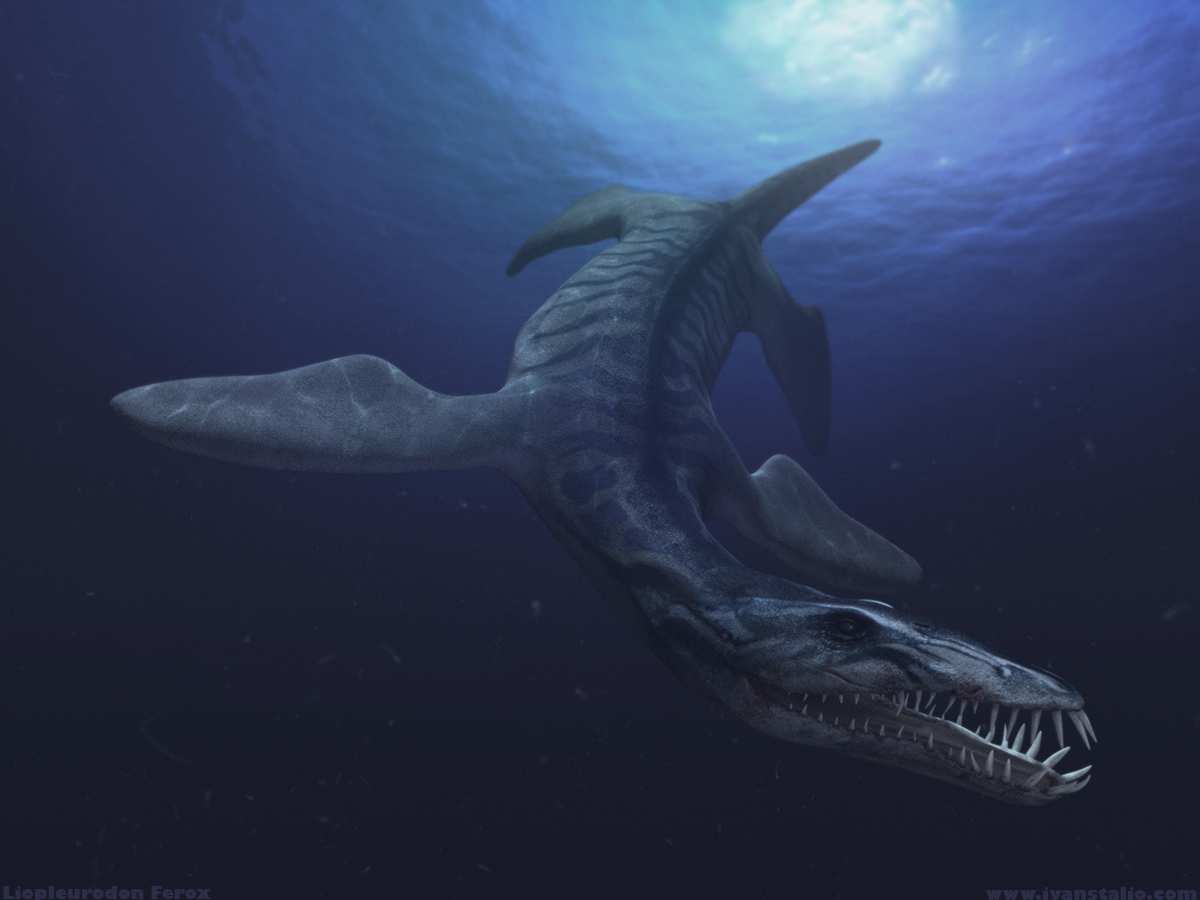Top Ten Most Dangerous Dinosaurs!
- Spinosaurus. Spinosaurus is a genus of theropod dinosaur that lived in what now is North Africa, during the lower Albian to lower Cenomanian stages of the Cretaceous period, about 112 to 97 million years ago.
Spinosaurus was the largest of all carnivorous dinosaurs, weighing the same as three buses. Spinosaurus was a fish eater that sometimes ate other meat.
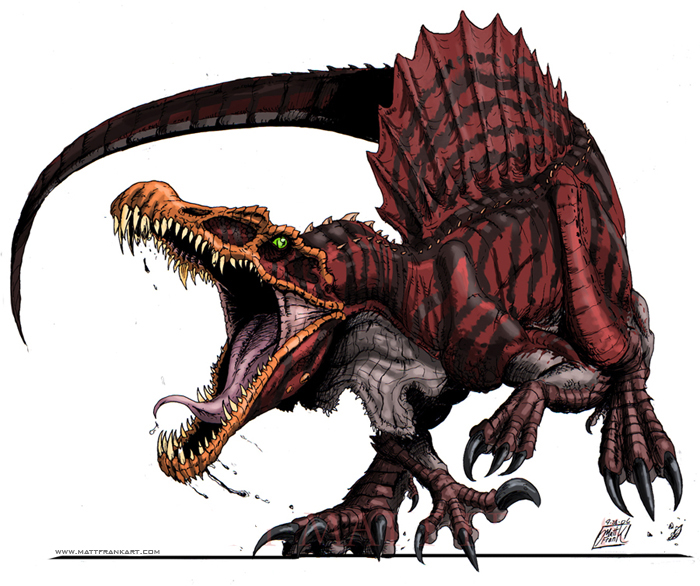
- Tyrannosaurus. Tyrannosaurus, meaning "tyrant lizard", from the Ancient Greek tyrannos, "tyrant", and sauros, "lizard" is a genus of coelurosaurian theropod dinosaur. It also had a tremendous bite force, the strongest of any dinosaur and living terrestrial animal. Its bite force reached up to 12,800 pounds.
Tyrannosaurus Rex was more intelligent, and far more lethal, than any of its competition. It was 37-50 feet long, up to 23 feet tall, and weighed 11 tons — twice as heavy as an Asian elephant. It had an 18,000-pound-per-square-inch bite that eliminated all of its competitors (including Spinosaurus)! A deadly bacteria in its saliva would utterly terminate helpless prey that somehow survived the initial bite.
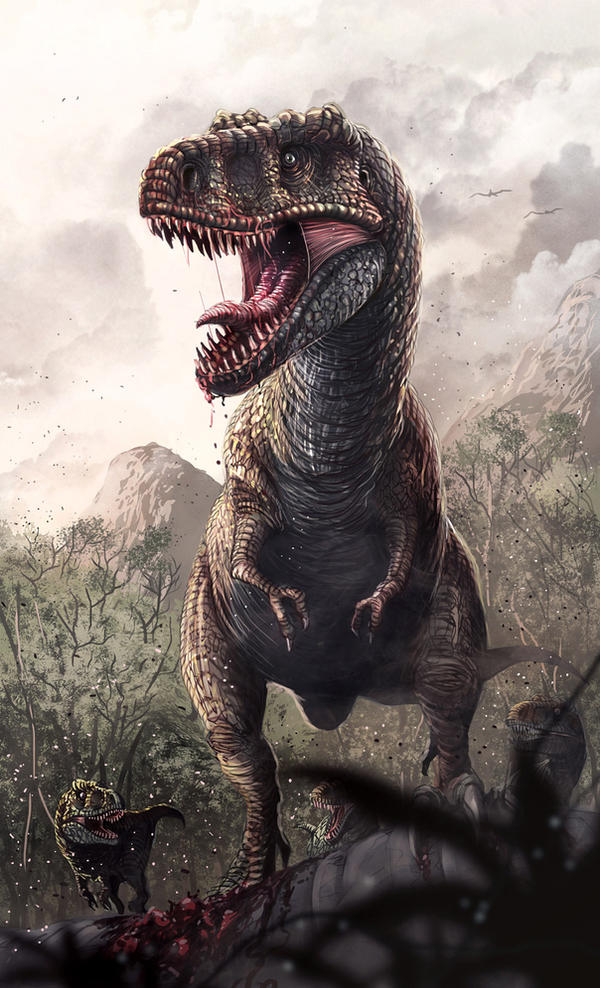
- Giganotosaurus. Giganotosaurus is a genus of theropod dinosaur that lived in what is now Argentina, during the early Cenomanian age of the Late Cretaceous period, approximately 99.6 to 97 million years ago.
Giganotosaurus was 43 feet long and weighed 13 tons. It could take down a full-grown Argentinosour!
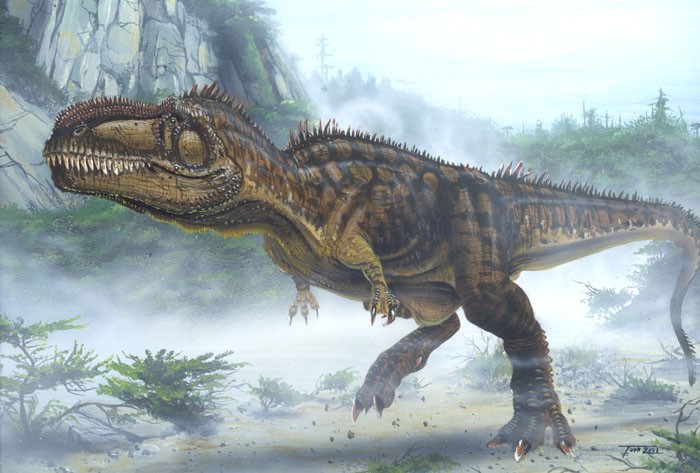
- Utahraptor. Utahraptor is a genus of theropod dinosaurs. It contains a single species, Utahraptor ostrommaysorum, which is the largest known member of the family Dromaeosauridae.
Utahraptor was very lethal, comparable to the raptors in Jurassic Park, with nine to 15-inch claws. It also had a mouthful of razor-sharp teeth, a superfast top sprinting speed, was 25 feet long, and was extremely smart. It was very maneuverable and hunted in packs.

- Carcharodontosaurus. Carcharodontosaurus is a genus of carnivorous carcharodontosaurid dinosaurs that existed between 100 and 94 million years ago, during the Cenomanian stages of the mid-Cretaceous Period.
Carcharodontosaurus had smaller arms like the T-Rex, and three air cavities in its chest, making it able to run fast and for a long time.

- Allosaurus. Allosaurus is a genus of large theropod dinosaur that lived 155 to 150 million years ago during the late Jurassic period.
Allosaurus was massive and smart enough to fight in packs, taking down prey twice the size of Tyrannosaurus Rex. It was a fierce carnivore with sharp, serrated teeth in its gaping jaws. It had three-fingered hands tipped with massive talons.

- Velociraptor. Velociraptor is a genus of dromaeosaurid theropod dinosaur that lived approximately 75 to 71 million years ago, during the latter part of the Cretaceous Period.
Velociraptor had a pair of huge sickle claws on each foot. It was three feet tall — about as tall as an adult human — and was light. It did not have a reptilian appearance, but looked more like a bird, and may have even had feathers!

- Ankylosaurus. Ankylosaurus is a genus of armored dinosaur. Fossils of Ankylosaurus have been found in geological formations dating to the very end of the Cretaceous Period, between about 68–66 million years ago, in western North America, making it among the last of the non-avian dinosaurs.
Ankylosaurus’ back and tail were full of deadly, armored plates. At the end of its tail was a thick tail club that could break the legs of even the largest theropods.

- Saurophaganax. Saurophaganax is a genusof allosauriddinosaur from the Late Jurassic period (about 151 million years ago). At around thirteen meters long, Saurophaganax was exceptionally large for a Jurassic theropod.
Saurophaganax was like Allosaurus, only bigger, nastier, and mightier. It was the grizzly bear of the Jurassic period, challenging Allosaurus, Edmarka and Epanterias. It had huge claws and ferocious jaws.
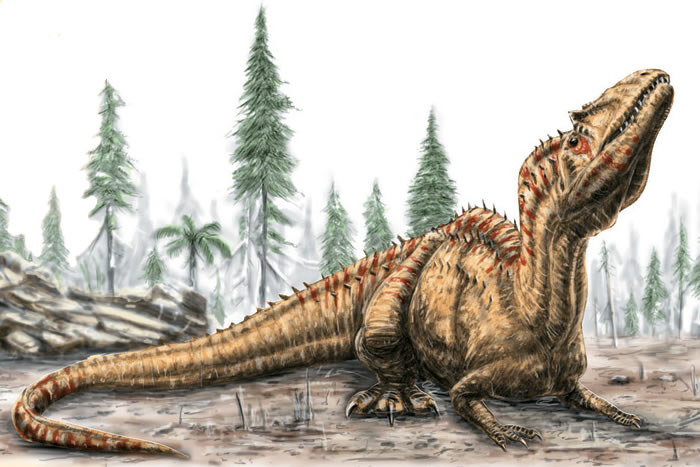
- Liopleurodon. Liopleurodon is a genus of large, carnivorous marine reptile belonging to the Pliosauroidea, a clade of short-necked plesiosaurs. The two species of Liopleurodon lived during the Callovian stage of the Middle Jurassic Period.
While not a dinosaur, Liopleurodon had a bite 10 times as strong as Tyrannosaurus. It grew to 40-50 feet long, the biggest prehistoric marine reptile.
